A lot can damage your basement walls. There’s water damage from flooding and pipe bursts. There are also mold and bugs to look out for.
Today, we’ll look at water damage. This tends to be the most disastrous of the previous and will require an urgent fix.
Fixing a leaky basement can be done from the inside or outside. Outside jobs are expensive and they require landscaping beforehand. They’re also a slower repair option. But, a faster and cheaper route is an inside fix.
You can do most of the work yourself. However, we do recommend a professional’s help. Professionals can quickly determine the source of the leak and the best fix for it. But, if you can find the source alone, then you can probably fix the problem for just $20 (plus some of your spare time).
So if you’re going the DIY route, then keep reading. Learning how to fix a leaky basement wall from the inside isn’t difficult. It is possible to fix cracks alone, with most being minor types. Plus, we always recommend you try fixing minor issues yourself. Though serious leaks from the inside will require professional work.
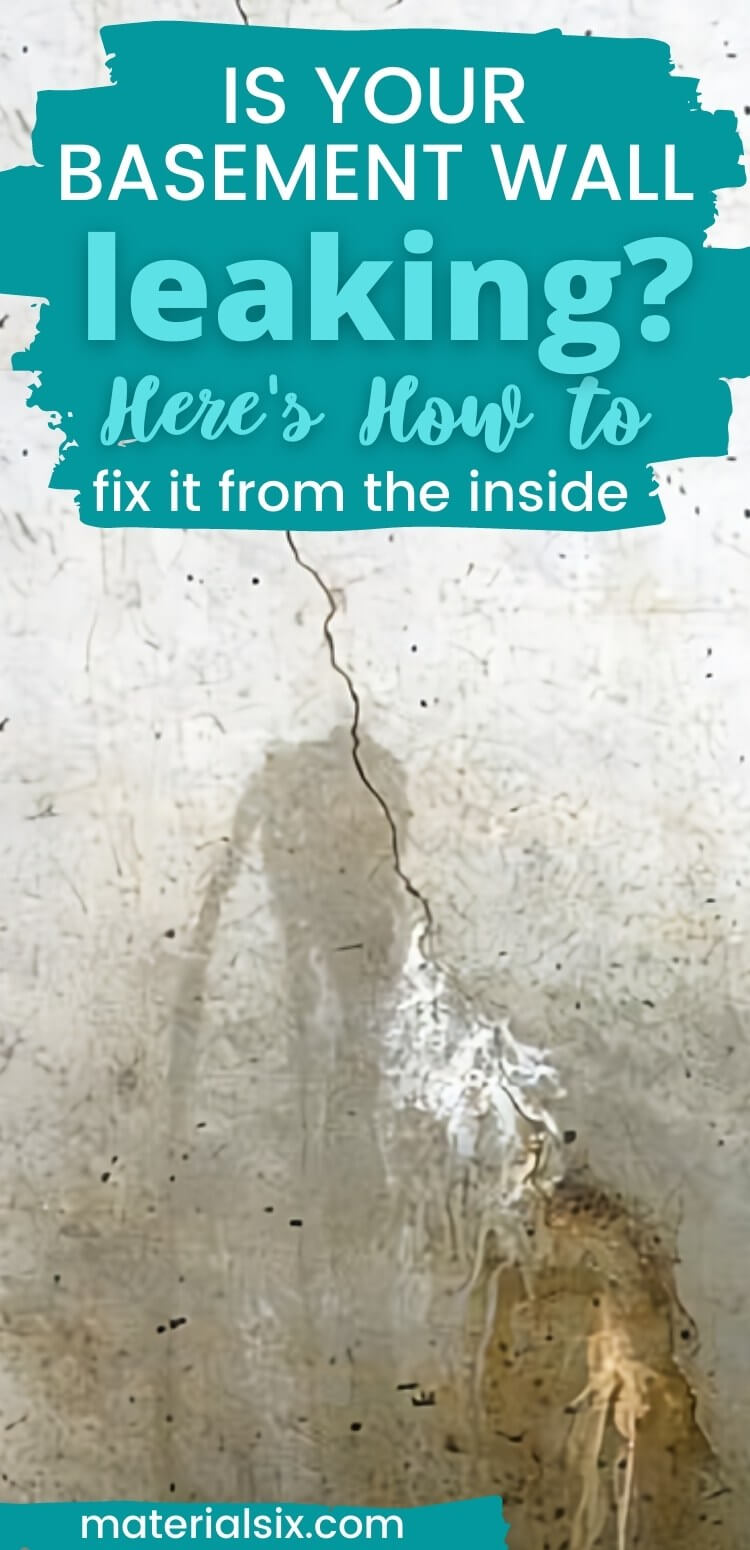
How to Fix a Basement Wall Leak from The Inside
Below, we’ll break down the process in three steps, though the steps do look at fixing small cracks and eliminating water. We’ll also look at other info you should know as you fix those issues.
How to Fix Leaking Basement Wall (3 Steps):
- Find the leak’s source
- Use concrete or caulk to fill the cracks
- Use masonry sealing to close off interior walls
1. Find the Leak’s Source
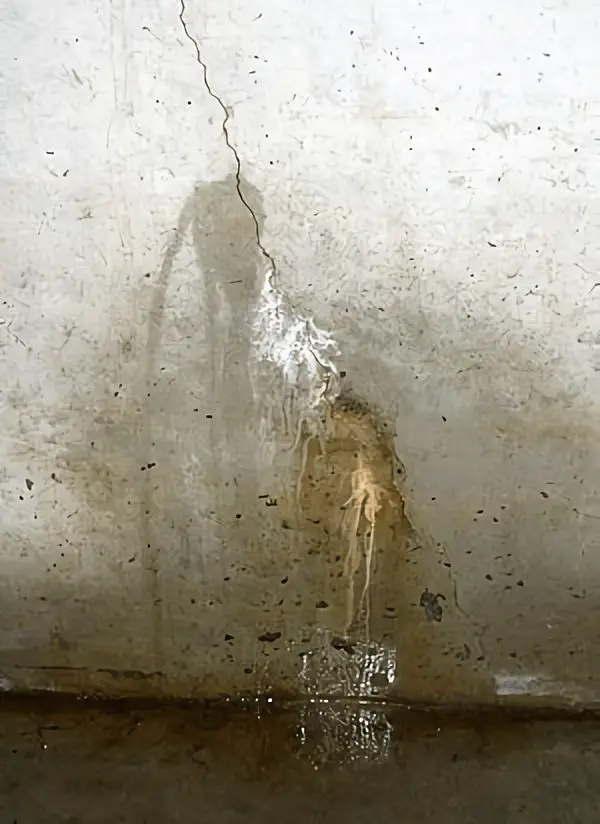
Learning how to fix a basement wall leak from the inside requires the following…
- First – Look for obvious pools of water. Directly above those pools should be cracked with water running down. If you can’t see those cracks directly, then you’ll have to look higher (which may end up being a roof leak).
- Second – Look for water streaks on walls. Concrete walls show them easily since they’re porous on the inside. Water stains can also indicate potential leaks that haven’t developed into cracks yet.
- Third – Try to detect mold. Mold is an indicator of moisture and will often cover leaky cracks. You’ll need to remove the mold before further fixing the issue.
If you’re still struggling to detect the leak’s source, then try a condensation test. It’s simple and involves using tinfoil to detect cracks.
Start by taking a square foot of foil, and attach it to a section on the wall (where you suspect a leak is). Leave it for 24 hours. Peel the tin off the next day, and check if that wall portion feels wet. If so, then the leak’s source is outside. If it’s not wet, then you’ll need to continue your search.
2. Use Concrete/Caulk to Fill Cracks
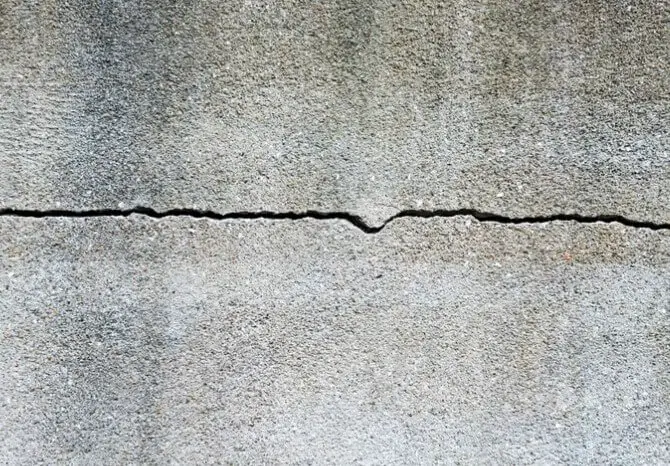
One of the best options for crack fills is hydraulic concrete. It expands by nature, thus quickly filling any cracks while removing the air inside.
When filling a crack, start by widening it out. You should carve a V-shape into the wall, letting you find and remove any loose material inside.
After removing loose material, prepare and pour in the concrete. Make sure to follow all instructions for the mixture you’ll use since it’ll set fast and will require a certain amount of water to be usable.
After it dries, the concrete will become a durable extension of your basement wall. With little loose material inside, you’ll guarantee a sturdy fill with little chance of future leaks.
3. Use Sealant to Close Interior Walls
We recommend masonry sealants. A good sealant covers and seeps into the concrete fill. It prevents water from leaking through cracks while reducing water vapor and humidity within the fill. Some even prevent dangerous gases from seeping through, like radon.
Do note that sealants shouldn’t be applied to painted walls. Masonry sealants work on bare walls, or else they’ll lack their full effects. Before applying one, be sure to remove the wall paint on the basement walls. The sealant can then be applied to the fill similar to paint.
Apply a thick coat and cover all minor pores you see. Allow the coat to dry overnight, then add a second coat for a watertight fill.
How to Pick a Sealant for Leaky Walls?
Your best option is one that maximizes protection. Aim for a watertight seal that’s also resistant to chemical fumes and vapors. For a quick and good option, we recommend starting off with RadonSeal.
It’s one of the few sealants that offer a lifetime guarantee from radon gases. RadonSeal also reduces mold, odors, and humidity in your basement. Plus, it adds protection from water seepage. The product is paint compatible after it dries. After sealing, you can add paint over it, and it won’t affect the coat. It’ll protect concrete walls, and is easy to apply using a roller, brush, or sprayer.
Do I Need Professional Help?
Not at all, you can opt for the DIY route.
Sealing is simply the end of the process. It’s simpler than adding concrete and taking out loose material from wall cracks. Sealing small holes and cracks is never a problem, and you shouldn’t need a professional’s time. Plus, you’re applying the fix from inside your basement, which is the cheapest and easiest option while being effective.
Sealants are applied similarly to paint. They’re the most effective method of reducing seepage and moisture in your walls. Rollers and brushes are fit for the job. The important thing is to add a thick layer to your walls while ensuring that the sealant goes into the concrete pores. Let the sealant coat stay overnight, which should give it enough time to dry. After that, add a second coat.
Finally, make sure you follow any instructions mentioned on the sealant you pick.
Is Fixing a Leaky Basement Expensive?
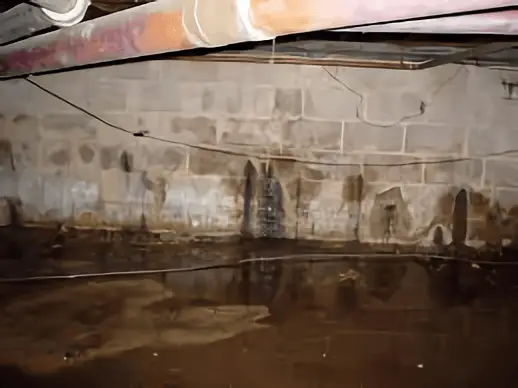
Costs vary and it all comes down to the degree of the problem. However, internal wall repairs always cost less than attempting an outside wall job. The reason has less to do with the fixes, and more with jobs, you’ll need prior.
Outside wall repairs require landscaping and digging beforehand. Digging is needed to access the wall’s surface. Plus, with digging comes the need for drain installations which require more labor. But, inside wall repairs require none of those preparations, greatly cutting the overall cost.
The filling is quite cheap, costing around $20. All you’ll need is to buy hydraulic cement or caulk. You’ll still need to buy a sealant though which will cost around $100 (this being the price tag for a good quality sealant).
An extra $100 is still little compared to professional help. You can get charged up to $2000 by a contractor, depending on the severity of the problem. Thus, it’s always an excellent idea to fix leaks yourself.
Are Leaky Basements Covered by Homemaker’s Insurance?
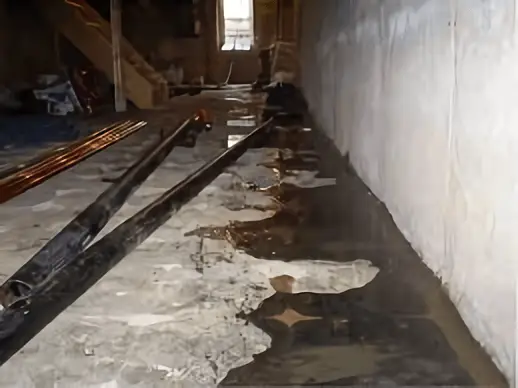
This depends on the insurance plan you own, but the coverage is a complex issue. A determining factor for that is the leak’s source. External water source leaks are usually not covered. Also, water seeping through concrete pores and cracks is never covered by insurance. Your best option is to accept the small repair cost and the fact that you’ll need to do the fixes yourself.
If you’re still in doubt about your coverage, your best option is to find the leak’s source then call your insurance provider to inquire.
Important Things to Note
Keep as many of your possessions as you can in water-proof containers/tubs. If you didn’t seal your basement well, it’s likely that you’ll have another leak in the future. Also, note that while small repairs are inexpensive, it’s likely that the problem may get worse in the future. If it gets out of control, then be sure to call a professional.
There are many methods to keep water out of your basement without needing to repair walls. They include installing a gutter system that’ll reduce floods while directing water flow.
Final Word
It’s likely that during your homeowner’s lifetime, you’ll have a leaky basement wall. The majority aren’t difficult to repair, especially if your home’s infrastructure’s relatively new. All that’s required is for you to detect the leak’s source, then fill in the cracks with concrete, before sealing your walls off with high-quality sealants.
This article should provide a good grasp on how to approach the problem without spending too much!
More from Materialsix:

